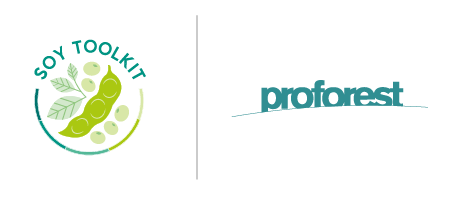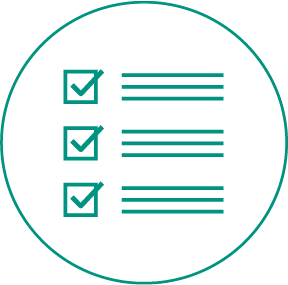Element 1: Plan and implement your responsible soy supply chain
If your company has committed to sourcing soy responsibly, then your business will likely already have policies setting out the environmental and social issues you want to address and the targets you aim to meet. However, to develop sound policy commitments, companies need to go through important steps, such as analysing the current situation and setting internal goals.
What are the Benefits of an implementation plan for soy sourcing?
A sustainable soy sourcing implementation plans help a company to strengthen understanding of its strategy, steps, responsibilities and timeframes. It also helps to monitor progress against your responsible sourcing commitments.
It’s important to note planning implementation involves integrating policies throughout your operations, as well as ensuring adequate structure, mandate and internal capacity for implementation.
The 5-step Soy Toolkit
The Soy Toolkit simplifies the wide array of existing tools by highlighting those most relevant to a company’s sustainability journey. This sheds light on the ways they can be used to meet sustainable soy sourcing goals.
In the below document, you’ll find guidance on how to devise an implementation plan to bring your soy policy commitments to life. Your company can hold accountability for the progress, building on comments and inputs received from soy buying companies, tool developers and non-governmental organisations.
1. Develop your implementation strategy
There are different types of companies, operating at different stages of the supply chain, with different levels of relevance and engagement. Recognising this diversity, companies can define the most effective strategy to implement their commitments, which considers:
Geographical reach: companies can start implementing their policy in high risk countries or regions and then expand it to other sourcing areas.
Supply chain reach: upstream companies can start the implementation looking at direct suppliers and then gradually increase the scope to include indirect suppliers.
Business units: downstream companies can also decide to implement their commitment in business units with larger soy footprint, where more soy is used and then move to other business units.
2. Define your milestones
For progressive implementation of your sustainable soy policy, you can use SMART* milestones as the basic structure of a monitoring and reporting framework. Milestones should have clear actions associated with them.
*specific, measurable, attainable, relevant & time-bound.
The different stages of the soy supply chain, from upstream soybean producers to downstream retailers and restaurants
3. Assign staff and build internal support
Implementing responsible sourcing commitments involves several departments of a company, including procurement, buyers, sustainability, senior leadership, communications, sales and field teams. In order to implement your policy:
Identify a leader or a lead-team to coordinate with departments involved.
Ensure integration of responsible sourcing objectives into the wider business sourcing strategy.
Identify teams that will support and be involved in the implementation.
Empower the teams involved through awareness-raising and capacity building activities.
4. Develop a timeframe
Developing a timeframe will include setting internal and external time-bound targets and long-term goals, based on knowledge of the soy supply chain including complexity, and type and number of suppliers. Deadlines should be ambitious but realistic.
5. Communicate, use and review the plan
Communicating your soy sourcing commitments and how they will be achieved is crucial. A company may choose to share its action plan in order to engage more effectively with implementation partners, align management teams, or to communicate their efforts to the market.
Companies can create an executive summary for external communication, adapted to different audiences and geographies, in order to reach all relevant stakeholders, especially producers. Implementation of planned activities needs to be monitored and the results used to review the strategy and update the plan, adjusting milestones and timeframes.
Learn more in Briefing note 1: Assessing and planning the implementation of soy sourcing commitments.









